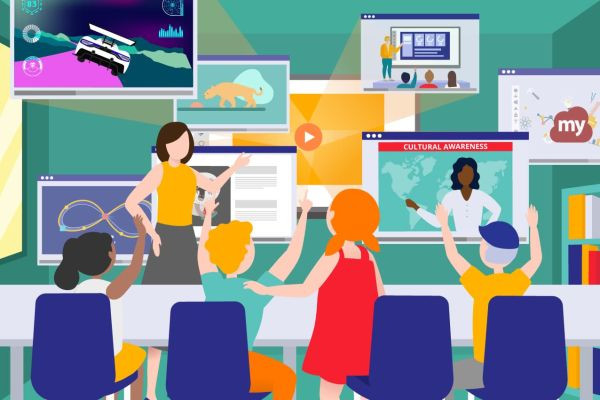1. Flipped Classroom Model
Description:
Teachers provide lecture content through videos for students to watch at home, reserving class time for interactive activities and personalized support.
Benefits:
- Self-Paced Learning: Students can watch, pause, and rewatch videos to understand concepts thoroughly.
- Interactive Classes: Class time is used for discussions, group work, and hands-on activities.
2. Visual Explanations and Demonstrations
Description:
Videos can effectively demonstrate experiments, processes, or abstract concepts, making them easier to understand.
Benefits:
- Clarity: Complex ideas are broken down visually.
- Retention: Visual aids help students remember information better.
3. Virtual Field Trips
Description:
Videos can take students on virtual tours of places they might never visit in person, such as historical sites, museums, or natural wonders.
Benefits:
- Cost-Effective: Eliminates the need for physical travel.
- Wide Access: Brings global locations into the classroom.
4. Student-Created Videos
Description:
Encouraging students to create their own videos fosters creativity, critical thinking, and technical skills.
Benefits:
- Engagement: Students actively engage with the material.
- Skill Development: Enhances communication and technical proficiency.
5. Interactive Video Quizzes
Description:
Videos with embedded quizzes (using tools like Edpuzzle) keep students engaged and provide immediate feedback.
Benefits:
- Active Learning: Students stay attentive and involved.
- Instant Feedback: Helps students gauge their understanding in real-time.
6. Supplementary Learning Materials
Description:
Videos can complement textbooks and other learning materials, providing diverse perspectives and deeper understanding.
Benefits:
- Enhanced Learning: Offers additional insights and explanations.
- Engagement: Makes learning more interesting and varied.
7. Guest Speakers and Expert Interviews
Description:
Videos of guest speakers and experts bring specialized knowledge into the classroom without logistical constraints.
Benefits:
- Access to Experts: Students learn from leading professionals.
- Flexibility: Videos can be watched anytime, allowing for flexible learning schedules.
8. Self-Paced Learning
Description:
Videos allow students to learn at their own pace, accommodating different learning speeds and styles.
Benefits:
- Personalization: Tailors learning to individual needs.
- Autonomy: Students control their learning process.
9. Multilingual Resources
Description:
Videos in multiple languages or with subtitles can support language learning and comprehension for non-native speakers.
Benefits:
- Language Support: Assists ESL students and foreign language learners.
- Inclusive Learning: Ensures all students can access the material.
10. Historical and Cultural Context
Description:
Videos can provide historical footage, cultural documentaries, and other context-rich resources that enhance understanding.
Benefits:
- Contextual Learning: Deepens understanding of historical events and cultural practices.
- Engagement: Makes learning about history and culture more dynamic and interesting.
Using videos in these ten ways can significantly enrich the educational experience, making learning more engaging, accessible, and effective for students and teachers alike. By leveraging the power of visual media, educators can create a more dynamic and inclusive classroom environment.









